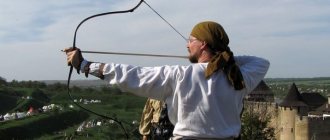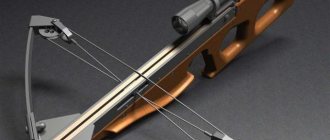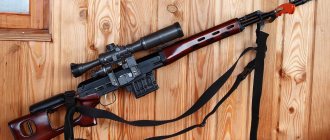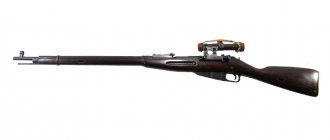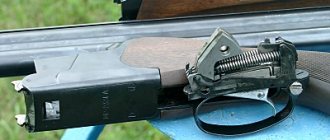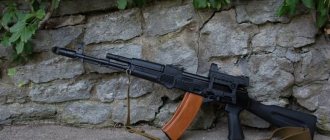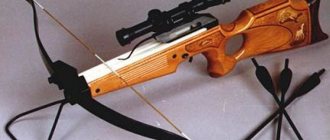Home » Books on the history of tanks » Flamethrower KV - KV-6 and its captured version Pz.Kpfw. KV-1A 753 (r) "Flamm"
Books on tank history
admin 04/26/2019 1390
11
in Favoritesin Favoritesfrom Favorites 7
Pz.Kpfw. KV-1A 753 (r) "Flamm". It is also the flamethrower KV-6, produced by the Kirov plant in Leningrad. The village of Strelna. Winter 1941 12.Pz.Div.?
Pz.Kpfw. KV-1A 753 (r) "Flamm". It is also the flamethrower KV-6, produced by the Kirov plant in Leningrad. The village of Strelna. Winter 1941 12.Pz.Div.?
KV-6 (“Object 226”) is a heavy chemical engineering tank. Experienced.
It was distinguished by the installation of an ATO-41 flamethrower in the front plate on the right, while retaining the course machine gun on the left. F-32 gun.
In August 1941, the Kirov plant in Leningrad produced 8-10 KV-6 tanks from the latest vehicle kits. Moreover, there were enough flamethrowers for 4 tanks, and the remaining KV-6s came out of the gate “with patches”, in the place where the flamethrower was properly installed.
From the personnel and mat. units of the 24th tank division and 146th tank regiment of the 198th motorized rifle division, on September 24, 1941, the 124th separate tank brigade was formed. All KV-6s were included in the 124th Tank Regiment of the 124th Separate Tank Brigade. In total, together with the KV-6, the 124th TP consisted of 32 units. KV-1, several T-34 , T-26 and a couple of armored vehicles.
KV-6 with a flamethrower, lost in the battles near Leningrad. 1941
KV-6 without a flamethrower, “with a patch” in place of the flamethrower box, lost in the battles near Leningrad. 1941
The KV-6 captured by the Germans near Strelna is awaiting repair.
The Germans offered to repair the KV-6 to our captured tank crews. Using spare parts from 30 other destroyed KV-1 and KV-6 tanks, 124 rounds.
The Germans offered to repair the KV-6 to our captured tank crews. Using spare parts from 30 other destroyed KV-1 and KV-6 tanks, 124 rounds.
Back view
Repaired Pz.Kpfw. KV-1A 753 (r) "Flamm". Strelna. 1942
The same Pz.Kpfw. KV-1A 753 (r) “Flamm” in white camouflage. The streaks show that the Germans were testing a flamethrower. Strelna. 1942
Another refurbished, former KV-6, Pz.Kpfw. KV-1A 753 (r) "with patch".
This is another flamethrower tank. KV-8 with a flamethrower in the turret and a replacement gun for a 45-mm model 1934. Until 1943, 137-139 units were produced at ChTZ (together with the KV-8s).
In the reports of the headquarters of the 42nd Army, no difference was made between the KV-1 and KV-6. The tactics of application also did not differ, because the weapons differed only in the presence of a flamethrower and due to the lack of training of crews and officers in the use of flamethrower tanks.
On October 8, 1941, the command of the 42nd Army, saving the bleeding Strelninsky naval landing force (a rifle battalion of 431 bayonets under the command of Senior Lieutenant A. Chelidze from the 20th Rifle Division of the operational forces of the NKVD of the USSR), launched a raid along Primorskoye Highway 124- 1st tank regiment of the 124th separate tank brigade. The choice in favor of the regiment mentioned above was not accidental: firstly, this military unit was armed with thirty-two KV-1 heavy tanks that had just rolled off the production line, and secondly, it was headed by such an experienced and a skilled officer like Major I.R. Lukashik was a participant in the battles at Khalkhin Gol and the Soviet-Finnish War. In addition, a landing force consisting of Baltic Fleet sailors sent to fight in the infantry was planted on the armor of these formidable vehicles.
Over the course of three days of fighting, the 42nd Army was unable to contact the landing force.
How a Soviet KV stopped a Nazi tank column for a day
Every schoolchild knows the epic story of the 300 Spartans who, at the cost of their own lives, held back the advance of the Persian army of thousands.
There were several similar cases of mass heroism in Soviet history, the most famous of which are the exploits of 28 Panfilov heroes and defenders of the Stalingrad “House of Pavlov.” But there was also the story of the KV tank, whose crew in July 1942 entered into an unequal confrontation with an armored column of the Nazis. And even though a day later the Germans managed to shoot the crippled armored vehicle, 16 tanks, 2 armored vehicles and 8 trucks with crosses on the sides were left to burn out on the battlefield.
The KV-1 tank that died in the Battle of Stalingrad.
The armor has numerous dents From postmen to tankers
The future hero, and then a simple boy, Semyon Konovalov was born in the Tatar village of Yambulatovo on February 14, 1920. If any of the villagers were told that in just 22 years their Syoma would accomplish an unprecedented feat and become a Hero of the Soviet Union, the narrator would immediately be laughed at. What feats, if Komsomol member Konovalov could only become a simple postman, delivering letters and periodicals throughout the village? His whole life should have been spent in the Tatar wilderness, if not for the movie “Tractor Drivers” released on big screens in 1939, in which the now legendary song “Three Tankers” sounded.
Like thousands of other young people, Semyon Konovalov decided that he would definitely become a tank driver. After being drafted into the Red Army (1939), he declared that he wanted to become a tank commander and was sent to study at the Kuibyshev Military School.
In the summer of 1941, on the eve of the start of the Great Patriotic War, Semyon Konovalov received lieutenant's shoulder straps and immediately went to hell, becoming the commander of a high-speed, but already outdated BT-7 tank.
Hell of the first months of the war
Only tactical knowledge and confidence in the reliability of his own combat vehicle, which was significantly inferior to German tanks in armor protection and armament, allowed the young commander to overcome the most difficult situations with honor.
Soviet tank BT-7
Sources claim that tanks driven by Konovalov’s crews received direct hits from enemy shells, and tankers had to jump out of burning vehicles more than once. Fate protected the future hero, who, after receiving a serious injury in August 1941, ended up in a Vologda hospital.
The country needed to train professional tankers, and Semyon Konovalov, who had gone through combat school, came in handy. He was sent to the Arkhangelsk Training Center, giving him the opportunity to restore his health, while simultaneously teaching recruits the intricacies of military affairs.
“I won’t sit in the rear”
Another would have rejoiced at such an opportunity, but Semyon bombarded the command with reports asking him to be sent to the active army. As they say, water wears away stones, and in April 1942 the authorities decided to get rid of the annoying officer. Moreover, the losses among the tank crews of the Red Army were monstrous, and the summer campaign of 1942 promised to be very hot.
This time Konovalov was lucky. He was appointed commander of a platoon of KV-1 tanks, which were considered the most powerful armored vehicles in the world and, until the advent of the German Tigers, had no worthy opponents.
Heavy Soviet tank KV-1 ("Klim Voroshilov")
The main disadvantage of this combat vehicle was its heaviness and clumsiness, but shells fired from a powerful 76-mm cannon easily penetrated the armor of enemy light and medium tanks.
Unfortunately, even this power at the beginning of the summer of 1942 was not enough to stop the Nazi offensive in the Donbass, Stalingrad and the Caucasus. Soviet tank crews launched unexpected attacks on the enemy’s flanks, destroying his manpower and military equipment, but they themselves suffered serious losses from the Nazis’ anti-tank artillery.
Seven brave
In mid-July, the Red Army continued its retreat to the east. There were only a few dozen vehicles left in the 15th Tank Brigade, and Konovalov’s platoon consisted of only one command tank, which was also pretty battered in battle.
On the morning of July 13, 1942, the brigade received an order to withdraw equipment to new defense lines. As luck would have it, Semyon Konovalov’s KV-1 stalled on the march. Whatever the commander himself, driver-mechanic Kozyrentsev, gunner Dementyev, loader Gerasimlyuk, junior driver-mechanic Anikin and gunner-radio operator Chervinsky did, the tank’s engine would not start, holding up the entire column.
Staying in the open area near the village of Nizhnemityakina in the Rostov region was like death, and the brigade commander decided to continue moving, leaving mechanic Lieutenant Serebryakov to help the tankers.
The task was extremely simple. As soon as possible, start the engine and proceed to the brigade concentration area. Or become a barrier for German troops, covering the retreat of their comrades.
For the Motherland
Repairing the tank took surprisingly little time. The tankers were already preparing to hit the gas when, from behind a nearby hill, two German tankettes unexpectedly jumped out at them, conducting reconnaissance of the territory.
Semyon Konovalov, who instantly regained his bearings, opened rapid fire, destroying one of the tanks. The second, however, managed to escape, hiding behind a hill.
It was clear that the scouts were being followed by a tank column that had to be stopped at all costs. The fighters, without a moment’s hesitation, began to prepare for the battle, knowing full well that it would be the last in their lives.
German tank column in the Don steppes
But even they were amazed to see the size of the German column, in which the soldiers counted 75 tanks and a large amount of other military equipment.
The nearby ravine helped a lot. It managed to slightly camouflage the KV-1, which, having brought the enemy within 500 meters, opened rapid fire on the Nazis.
While the Germans were getting their bearings, they lost four of their tanks and were forced to leave the battlefield. The Nazis thought that they had run into a well-organized defensive position of the Red Army, which they decided to simply crush with their might.
You're lying, you won't take it!
The next German attack was organized according to all the rules of military art. First, the ravine was covered by artillery, cutting up all the vegetation with fragments of their shells, after which 55 tanks went into battle.
Column of German Panzer III tanks
Semyon Konovalov began to maneuver around his ravine, opening fire from various points. By doing this, he created even greater confidence among the enemy that they were dealing with pillboxes and several artillery mounts. The German attack fizzled out, and the number of burning tanks increased by another 6 units.
The Nazis, confident in their invincibility, were not going to retreat, and the next attack on the KV-1 was supported by infantry. True, the Germans did not calculate the range of the tank gun, losing 8 trucks with soldiers as a result of direct hits.
Problems for our tankers came when one of the enemy shells made the KV-1 unable to move. A hail of armor-piercing shells fell on the stuck car. But the armor held, and return fire destroyed 6 more enemy tanks and 2 armored cars.
Until the last shell
Only in the evening, when our fighters ran out of shells and were only firing from machine guns, did the Nazis manage to pull a 105-mm cannon to the tank. The gun was placed 75 meters from the Soviet armored monster and shot at it with direct fire. The KV-1 died, giving its comrades an extra day to organize their defense.
When the next day a group of reconnaissance officers specially sent for Konovalov’s crew arrived at the battlefield, they saw a KV-1 torn apart from direct hits, which contained fragments of the bodies of its crew.
The remains of 16 German tanks, two armored vehicles and 8 trucks were still smoking on the battlefield, and residents of the village of Nizhnemityakina told the story of the epic battle between Soviet tank crews and the Nazis.
Destroyed German tanks and the corpses of their crew members
Having learned about the crew’s feat, the command decided to nominate the crew for government awards, and offered to award its commander the Gold Star of the Hero of the Soviet Union (posthumously).
Hero or traitor?
But it turned out that the story does not end there. Imagine the surprise of the commander of the 15th Tank Brigade when, in response to the funerals sent to the relatives of the crew members, an unexpected response came from the Tatar village of Yambulatovo.
It said that Semyon Konovalov was alive and was fighting in another military unit in a captured tank.
The security officers immediately had understandable questions, and an intelligent NKVD investigator was sent to the right unit, who was supposed to expose the tanker of treason.
The truth turned out to be banal, and therefore even more incredible. The Germans began shooting at the Soviet KV-1 when it was already getting dark. And Semyon Konovalov, gunner Dementyev and mechanic Serebryakov, who had previously removed the machine gun, managed to get out through the lower hatch.
Under the cover of darkness they escaped pursuit. Moreover, the Germans did not even admit the possibility that any of the Russians could survive in such a meat grinder.
Incredible return to home
For a week, the fighters marched east, but were unable to catch up with the rapidly retreating Red Army. His Majesty chance came to the rescue. One night, the Red Army soldiers came upon the crew of a German tank, which was carefree resting in the Don steppes.
Hitler's tank crews are on vacation. Advertising picture
An unexpected blow, and the tank turned from German into Soviet, although it had crosses on its sides.
Then everything was simple. The tankers crossed the occupied territory without any problems, and when breaking through the defense line, they were forced to turn the barrel in the opposite direction. Perhaps it was this, as well as rapid fire at the Germans who did not understand anything, that saved the incomprehensible tank from destruction by Soviet artillery.
July 1942 was perhaps the most critical for the Red Army. Therefore, the verification of the fighters who escaped the encirclement took place within one day. The tankers, without hesitation, were enrolled in the staff of the unit they were assigned to, and Konovalov and the Dementievs were allowed to fight in the tank they had captured.
The commander promised to report the fighters to the 15th Tank Brigade. But in the heat of the time, they simply forgot about it, or the documents got lost somewhere along the way.
Simple Soviet man
The captured tank “lived” for another three months, participating in defensive battles on the outskirts of Stalingrad. Semyon Konovalov repeatedly got into serious troubles and was injured several times. But he remained alive.
The well-deserved award found the front-line soldier only in March 1943, when the Presidium of the Supreme Soviet of the USSR decided to award Semyon Konovalov the title of Hero of the Soviet Union. Not posthumously.
He went through the entire war and had a large number of state awards. He completed his military service in 1956 with the rank of lieutenant colonel, after which he returned to his native Kazan.
Semyon Vasilievich Konovalov
Semyon Konovalov was a welcome guest in educational institutions, telling young people about the exploits of the heroes of the Great Patriotic War. At the same time, he tried not to talk too much about the most terrible battle of his life, believing that any Soviet person should have done this.
The modest hero died on April 4, 1989. Grateful descendants named one of the streets of Kazan after him.
... October 12, 1941
9-55 Leningral Front request: have the boxes been removed? Answer 42A: They pulled one out. Len.Front's request: what about the rest? Answer 42A: They were defeated and Rodin reported that there was no point in pulling them out. 12 tanks remained in the depths and were badly damaged, the main thing is that the enemy firmly closed the road to them, blowing up the overhead pipe on the highway, installing landmines and organizing anti-tank defense.
The regiment commander, Major I.R. Lukashik, was posthumously awarded the Order of the Red Star.
Until October 16, the 124th tank brigade was busy putting its equipment in order and receiving reinforcements. During these days, the 124th separate anti-aircraft artillery division was formed. Senior Lieutenant Bazhenov was appointed division commander, and senior political instructor Kulagin was appointed military commissar.
Yuri RZHEVTSEV and Retrospective of the participation of the 124th tank brigade (call sign “Luna”) during the Strelna operation to support the amphibious assault in Strelna (call sign “Lastochka”), landed on the night of October 7-8, 1941. Based on data from the headquarters of the 42nd Army.
From the report of the 18th German Army: “the enemy managed to land at the location of the 59th division between Uritsk and Strelnaya and broke through here from St. Petersburg with a large number of tanks”... (A little more about this tank attack)... Regiment of Major N.R. Lukashin (I.R. Lukashik) consisted of 32 heavy KV tanks, which had just been manufactured at the Kirov plant in Leningrad. The regiment's offensive, like Chelidze's landing, began at dawn on October 8, 1941. The tanks broke through the defenses and fought their way to Strelna, but did not find the landing force, which was reported to the brigade commander. They brought up self-propelled artillery and surrounded the tanks that were trying to break through to their groups.
So, almost immediately from the factory gates, all KV-6s remained with the Germans.
In this example, one can see the characteristic miscalculations of our tactical leadership of the period 1941-1942. But competent strategic planning made it possible to withstand the initial tactical success of the Germans. And it gave time to train new, tactically competent officers.
Tanks 1-7 - episode 1. Tanks 8-11 - episode 2. Tank 12 - episode 1, with a tractor and an anti-aircraft gun. Tanks 13 and 14 - episode 3. Tank 15 - episode 3, Sergievsky Spusk, households with photo 41(2) preserved. Tank 16 - episode 3.
Episode 1. Photo No. 5(4)
Episode 1. Photo No. 4(2)
Episode 3. Photo 41(2).
Episode 3. Photo No. 30(1)
Sources:
1. otvaga2004.mybb.ru 2. mavr13.narod.ru 3. reflection-wwii.ucoz.ru 4. henk.fox3000.com 5. knigo-man. KV-6. 6. www.forum.aroundspb.ru 7. forum.patriotcenter.ru. Yuri RZHEVTSEV. 8. www.battlefield.ru
An excerpt characterizing the KV-6
- De Bal macheve! - said the king (with his decisiveness overcoming the difficulty presented to the colonel), - charme de faire votre connaissance, general, [it’s very nice to meet you, general] - he added with a royally gracious gesture. As soon as the king began to speak loudly and quickly, all royal dignity instantly left him, and he, without noticing it, switched to his characteristic tone of good-natured familiarity. He put his hand on the withers of Balashev's horse. “Eh, bien, general, tout est a la guerre, a ce qu'il parait, [Well, general, things seem to be heading towards war," he said, as if regretting a circumstance about which he did not could judge. “Sire,” answered Balashev. “l'Empereur mon maitre ne desire point la guerre, et comme Votre Majeste le voit,” said Balashev, using Votre Majeste in all cases, [The Russian Emperor does not desire her, as your Majesty is pleased to see... your Majesty.] with inevitable the affectation of increasing the frequency of the title, addressing a person for whom this title is still news. Murat's face shone with stupid contentment as he listened to Monsieur de Balachoff. But royaute oblige: [the royal rank has its responsibilities:] he felt the need to talk with Alexander's envoy about state affairs, as a king and an ally. He got off his horse and, taking Balashev by the arm and moving a few steps away from the respectfully waiting retinue, began walking with him back and forth, trying to speak significantly. He mentioned that Emperor Napoleon was offended by the demands for the withdrawal of troops from Prussia, especially now that this demand had become known to everyone and when the dignity of France was insulted. Balashev said that there was nothing offensive in this demand, because... Murat interrupted him: “So you don’t think Emperor Alexander was the instigator?” - he said unexpectedly with a good-naturedly stupid smile. Balashev said why he really believed that Napoleon was the start of the war. “Eh, mon cher general,” Murat interrupted him again, “je desire de tout mon c?ur que les Empereurs s'arrangent entre eux, et que la guerre commencee malgre moi se termine le plutot possible, [Ah, dear general, I wish with all my heart that the emperors put an end to the matter between themselves and that the war, started against my will, ends as soon as possible.] - he said in the tone of the conversation of servants who want to remain good friends, despite the quarrel between the masters. And he moved on to questions about the Grand Duke, about his health and about the memories of the fun and amusing time spent with him in Naples. Then, as if suddenly remembering his royal dignity, Murat solemnly straightened up, took the same position in which he stood at the coronation, and, waving his right hand, said: “Je ne vous retiens plus, general; je souhaite le succes de vorte mission, [I will not detain you any longer, General; I wish your embassy success,] - and, fluttering with a red embroidered robe and feathers and glittering with jewelry, he went to the retinue, respectfully waiting for him.



